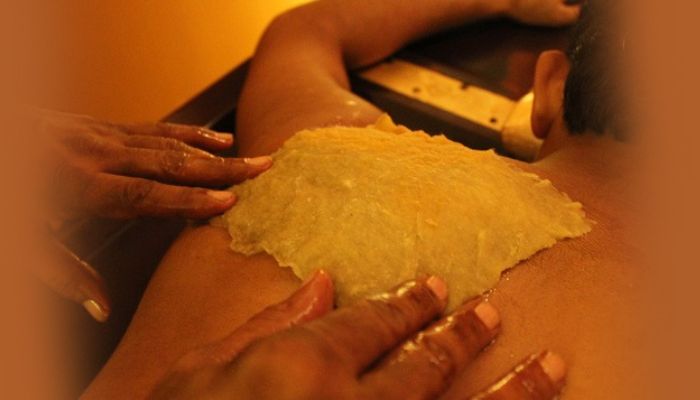Welcome to my blog post, where we explore the ancient healing art of Ayurveda to manage and treat tennis elbow pain. In this article, we will delve into what tennis elbow pain is, the factors that contribute to its development, who is at risk, the signs and symptoms to look out for, and how Ayurveda approaches its treatment and management. So let’s get started!
Understanding Tennis Elbow Pain
Tennis elbow, also known as lateral epicondylitis, is a condition characterized by inflammation and pain in the tendons that connect the forearm muscles to the outside of the elbow. It is often caused by repetitive arm movements, especially those involving gripping and twisting motions.
Causative Factors of Tennis Elbow
There are several causative factors that can contribute to the development of tennis elbow. These include:
- Repetitive motion: Engaging in activities that involve repetitive arm movements, such as playing tennis, painting, or using a screwdriver, can strain the tendons and lead to tennis elbow.
- Overuse of forearm muscles: Overusing the forearm muscles without adequate rest can put excessive stress on the tendons, leading to inflammation and pain.
- Poor technique or form: Incorrect technique or form while performing certain activities can increase the risk of developing tennis elbow.
Who Is at Risk?
Anyone can develop tennis elbow, but certain individuals are more susceptible to this condition. Those at higher risk include:
- Athletes: Tennis players, golfers, and other athletes who engage in repetitive arm movements are more susceptible to tennis elbow.
- Manual laborers: People involved in occupations that require repetitive hand and arm movements, such as carpenters, plumbers, and painters, are at increased risk.
- Age and gender: Tennis elbow is more common in individuals between the ages of 30 and 50, and it tends to affect men and women equally.
Signs and Symptoms of Tennis Elbow
The signs and symptoms of tennis elbow may vary from person to person, but common indicators include:
- the outside of the elbow is inflamed and painful.
- Weak grip strength
- Difficulty in performing simple tasks, such as lifting objects or turning a doorknob
- Pain that worsens with certain movements, such as gripping or twisting
Ayurvedic Concept of Tennis Elbow
According to Ayurveda, tennis elbow is primarily caused by an imbalance in the Vata and Pitta doshas, which govern the movement and transformation in the body. This imbalance leads to the accumulation of toxins, inflammation, and pain in the affected area.
Ayurvedic Treatment for Tennis Elbow
Ayurveda offers a holistic approach to treating tennis elbow, focusing on restoring the balance of the doshas and reducing inflammation. The treatment typically involves both internal and external medication. Internal Medication
- Herbal Supplements: Ayurvedic herbs like Ashwagandha, Guggul, and Shallaki are known for their anti-inflammatory properties and can help reduce pain and inflammation.
- Ayurvedic Formulations: Medicinal formulations like Mahayograj Guggulu and Triphala Guggulu can be beneficial in reducing pain and promoting the healing of tendons.
External Medication Herbal Oil Massage: Massaging the affected area with herbal oils like Mahanarayan oil or Bala oil can provide relief from pain and inflammation. Panchakarma Therapies: Panchakarma treatments such as Abhyanga (full body massage), Swedana (herbal steam therapy), and Patra Pinda Sweda (herbal bolus massage) can help alleviate pain and improve circulation in the affected area.

Ayurvedic Treatment for Tennis Elbow
Management of Tennis Elbow in Ayurveda
In addition to medication, Ayurveda emphasizes certain lifestyle and dietary changes to manage tennis elbow effectively. These include:
- Rest and Avoidance of Aggravating Activities: Giving adequate rest to the affected arm and avoiding activities that worsen the pain is crucial for the healing process.
- Hot and Cold Compress: Applying a hot or cold compress to the affected area can help reduce inflammation and alleviate pain.
- Gentle Stretching and Strengthening Exercises: Engaging in gentle stretching and strengthening exercises, with the guidance of a qualified professional, can aid in the recovery process.
- Ayurvedic Diet: Following a dosha-balancing diet, rich in fresh fruits, vegetables, whole grains, and lean proteins, can support the healing process and reduce inflammation.
Conclusion Tennis elbow can be a debilitating condition, but with the holistic approach of Ayurveda, relief and healing are possible. By addressing the underlying imbalances, reducing inflammation, and promoting overall well-being, Ayurvedic treatments can provide long-term relief from tennis elbow pain. Remember to consult with an Ayurvedic practitioner for personalized guidance and treatment options. So, if you’re struggling with tennis elbow pain, why not give Ayurveda a try? Embrace the ancient wisdom of this holistic healing system and experience the benefits for yourself.
Discover the healing power of Ayurveda with our latest article at Sai Ayush Ayurveda Hospitals! Dive into the age-old wisdom that can rejuvenate your body and mind. Click here to read more:




















0 Comments